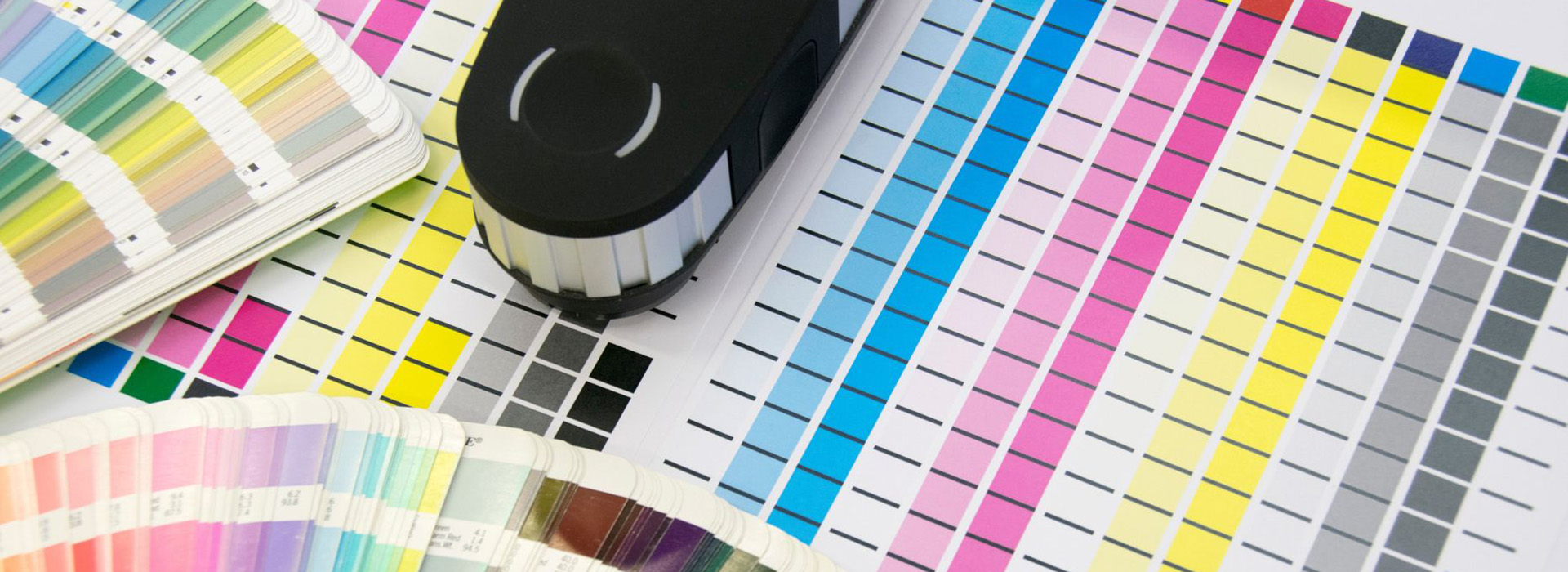We deal with the topic of profiling every day. But what exactly is profiling in digital printing? And what are the benefits of profiling? We explain this to you in this blog article.
What is profiling in digital printing?
The term profiling is often confused with the calibration of a printing system. In fact, calibration is the prerequisite for creating a high-quality ICC profile – the more linear the output of a printing press is, the more accurately the ICC profile can give us information about its color space. The ICC profile enables us to make statements about the color space of the printer, e.g. about the deepest possible black, gray tones, light tones, saturated tones, etc. Profiling generally means the creation of this ICC profile. A profile is therefore a kind of translation table that provides us with data pairs of L*a*b* values and output color values of the printing device. It represents the actual coloration for each digital data combination.
Why is profiling necessary?
ICC color management helps digital printers to reproduce the same color on different printing materials. ICC color profiles are used for color reproduction between input and output devices to match the color profiles of two end devices. During profiling, color deviations are detected and minimized. This allows you to achieve the desired color on the screen and in print.
Benefits of profiling
- Enhancement of your color management workflow
- High quality print results
- Accurate color reproduction on your output devices
- Minimize waste
- Reduce your overall production costs
Profiling with ColorGATE
ColorGATE’s Productionserver can convert the color values from an input color space embedded in a file to the output color space of the printer. This translation from an input to an output color space works as long as all parameters and processes that influence the color remain unchanged. This is because a profile represents a combination of printing process, ink, medium and other process parameters that can influence the color. Depending on the industry, these can be, for example, firing curves in the ceramics industry or dryer temperatures in textile printing. If these parameters change, a re-profiling is necessary to ensure that the software, hardware, and other environmental variables are again properly matched. Profiling must therefore be carried out under normal production conditions, i.e. the machine, ink and ambient temperature must be conform to the operating conditions.
Profilier Suite
ColorGATE offers various tools that support you in profiling your printer. One of these is the Profiler Suite module. The Profiler Suite is used to create precise ICC profiles to optimize color reproduction on printing devices. The module automates the profiling process and enables you to create profiles quickly and easily. Further information on the Profiler Suite can be found at https://www.colorgate.com/products/software/profiler-suite.
We will be happy to help you to find the right modules for your optimal profiling. You can find further information at https://www.colorgate.com/products/software/modules/.
If you have any further questions, we will be happy to help you. Simply contact us at contact@colorgate.com.
